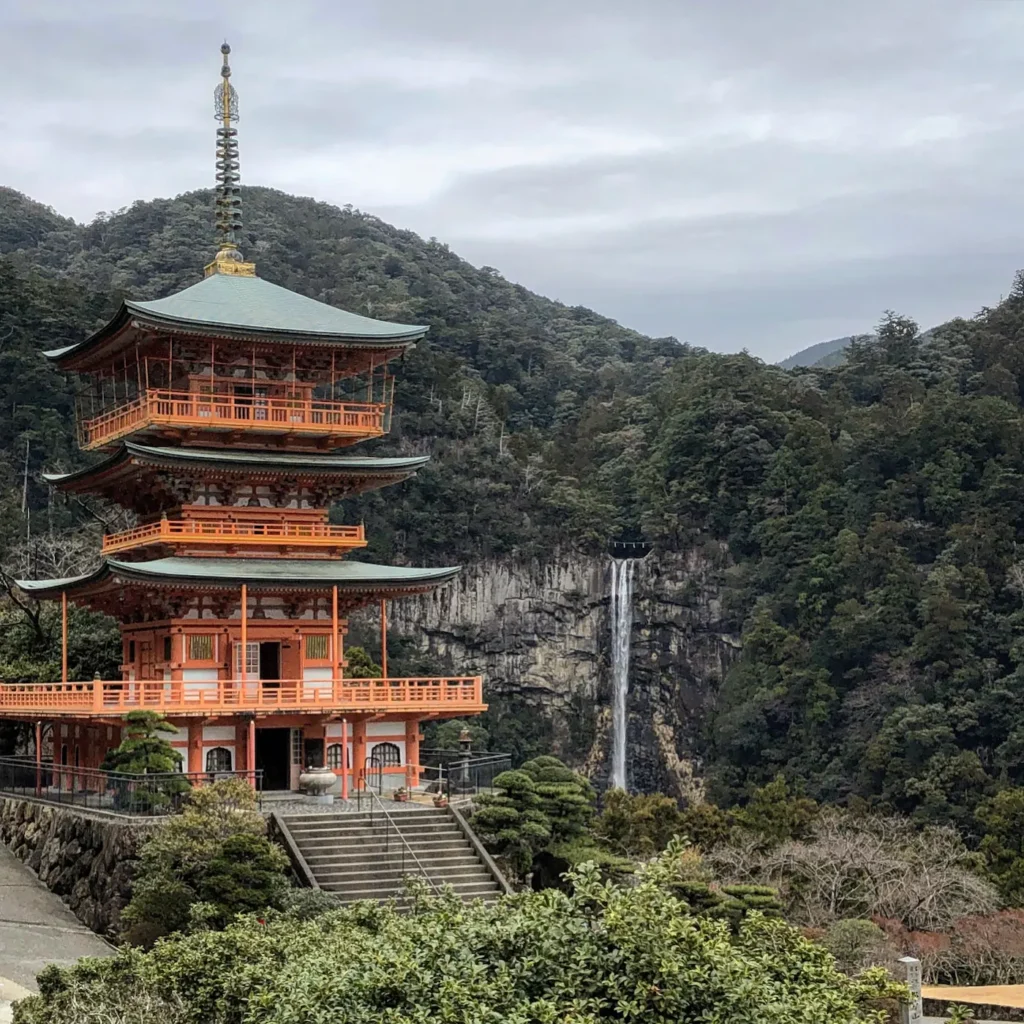The Kumano Kodo (熊野古道) is a set of ancient pilgrimage routes that run through the mountains of the Kii Peninsula in southern Japan. They connect important Shinto shrines known as the Three Great Kumano Shrines or Kumano Sanzan: Hongu Taisha, Nachi Taisha and Hayatama Taisha.

Its origins date back to the Heian period (794-1185), when emperors and aristocracy began to seek spiritual experiences away from the hustle and bustle of Kyoto. During the 11th to 13th centuries, the journey to Kumano, known as Kumano mōde, became a popular practice among the upper class as an act of purification and spiritual rebirth. Later, the pilgrimage became democratised, and more and more peasants and monks travelled these routes. Although it fell into disuse after Japan’s modernisation, the Kumano Kodo was rediscovered as a cultural and spiritual legacy, and in 2004 it was declared a UNESCO World Heritage Site.
The Kumano routes are also ideal for hiking. Unlike the Camino de Santiago where all routes end in Compostela, on the Kumano you can choose your route and end your journey at any of the three shrines, although most commonly your last destination is Hongū Taisha (Nakahechi, Kōhechi and Omine Okugake-michi routes). To get accreditation as a pilgrim you can take one of the main routes or just walk the last 7km of the Nakahechi route and visit the three shrines. Like the Camino de Santiago, when you arrive at your destination you will have to show the stamps you have collected at different points along the way and prove that you have completed the route. The two routes are twinned and if you have completed both pilgrimage routes you can obtain the Dual Pilgrim.
For accommodation during the Camino it is usually necessary to make a reservation in advance through the official Kumano organisation, so it is important to plan ahead and be clear about the stages you are going to do. In general, the accommodations are ryokans with all the comforts, they are adapted for solo travellers or groups and usually have dinner included, which as you can imagine is usually a spectacular kaiseki. There are also other accommodation options in the form of hostels or small hotels.

Main Kumano routes
Nakahechi (中辺路)
The most popular route of the Kumano Kodo, it starts in Tanabe and goes deep into the mountains to the Kumano Hongū Taisha shrine. It offers good infrastructure, traditional accommodation and mountain scenery, with many cultural attractions. It is ideal for first-time Kumano trekkers. The total distance of the trek is about 40 kilometres and usually takes about 3 days to complete.
Kōhechi (小辺路)
Mountainous and demanding route connecting Mount Kōyasan to Kumano Hongū Taisha. It crosses high passes and remote sections, requiring experience and physical preparation. It has fewer facilities along the way and is a longer distance than the Nakahechi, at around 70 kilometres, which will take 4-5 days to complete. If you are looking for a more adventurous route and feel that the Nakahechi is too touristy, this is the best option.
Iseji (伊勢路)
This great route connects Ise Grand Shrine with Nachi and Hayatama shrines in Kumano. It runs along the east coast of the Kii Peninsula and combines sea, rice fields and traditional villages. Historically used by pilgrims from eastern Japan, it is very long (about 170km) and not very busy. You will need 8-10 days to complete it comfortably.
Ohechi (大辺路)
The Ohechi route is a coastal route linking Tanabe to Nachi Taisha via cliffs, beaches and fishing villages in the south. It was used by those who made the journey in combination with sea routes. Today it is one of the least travelled and worst preserved, but it offers unique ocean views. The only problem is that it is not entirely continuous and it is necessary to go off the road at certain points. It’s about 90 kilometres and will take you about 5 days.
Omine Okugake-michi (大峯奥駈道)
Perhaps the toughest route, linking Yoshino (in Nara) with Kumano Hongū Taisha through the sacred mountains of the Shugendō. It is very demanding, high mountainous and poorly signposted, so it is advisable to do it only with a guide. It is about 100km and takes between 7 and 9 days to complete.

Do you want to travel to Japan and have us organise an amazing trip to the Kumano mountains and routes? Contact us and we will design the perfect experience for an unforgettable trip.